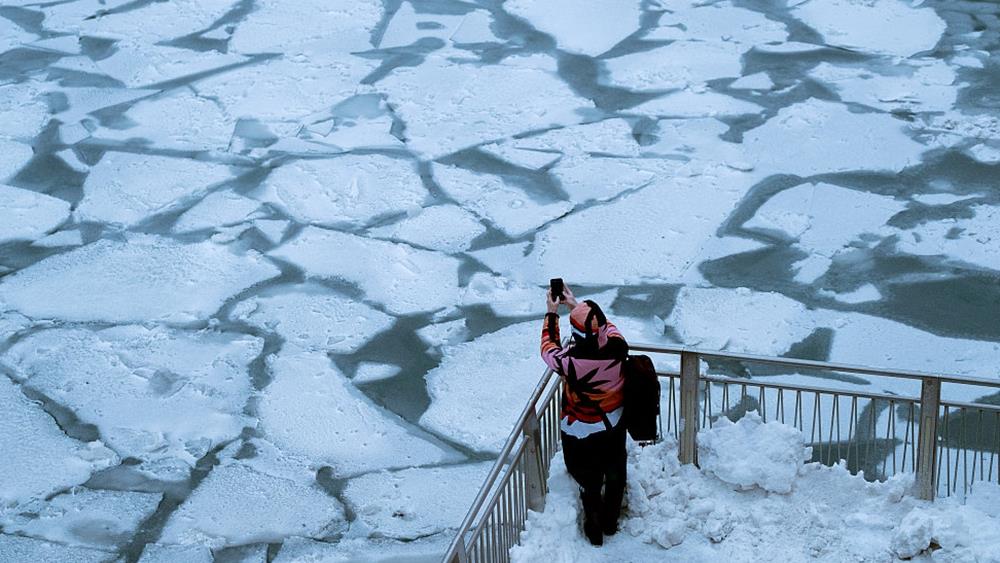WASHINGTON, Feb. 1 (CGTN) -- At least 21 people have died in the U.S. Midwest, which shivers in the grip of its worst cold snap in decades.
Warmer-than-normal weather was on the way, but that offered little comfort to vulnerable populations such as the homeless and elderly enduring cold that caused frostbite in minutes and made staying outside potentially deadly.
Officials across several states linked numerous deaths to the frigid air. The death toll rose from a previous 12 after at least nine more people in Chicago were reported to have died from cold-related injuries, according to Stathis Poulakidas, a doctor at the city's John H. Stroger Jr. Hospital.
Poulakidas, a trauma specialist, said the hospital had seen about 25 frostbite victims this week. He said the most severe cases risked having fingers and toes amputated.
Among those believed to have died from the cold was an 18-year-old student at the University of Iowa. The student was found unresponsive on campus early Wednesday morning just a short walk from his dorm, according to university officials.
Police told a local television station they believed the cold played a factor in his death. The wind chill at the time officers found Belz was minus 51 F (minus 46 C), according to the National Weather Service.
Homeless and displaced people were particularly at risk, with Chicago and other cities setting up warming shelters. But many toughed it out in camps or vacant buildings. A 60-year-old woman found dead in an abandoned house in Lorain, Ohio, was believed to have died of hypothermia, Lorain County Coroner Stephen Evans said.
"There's just no way if you're not near a heat source that you can survive for very long out in weather like this," Evans told the Chronicle-Telegram newspaper.
It has been more than 20 years since a similar blast of frigid air covered a swath of the U.S. Midwest and Northeast, according to the National Weather Service.
The bitter cold was caused by the mass of air known as the polar vortex drifting south from its usual position over the North Pole.
Homes and businesses used record amounts of natural gas for heating to fight the cold, according to financial data provider Refinitiv. Utilities appealed to consumers to conserve energy to avoid power outages.
